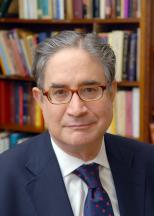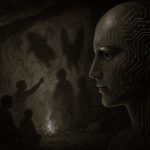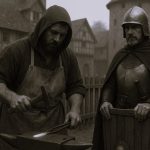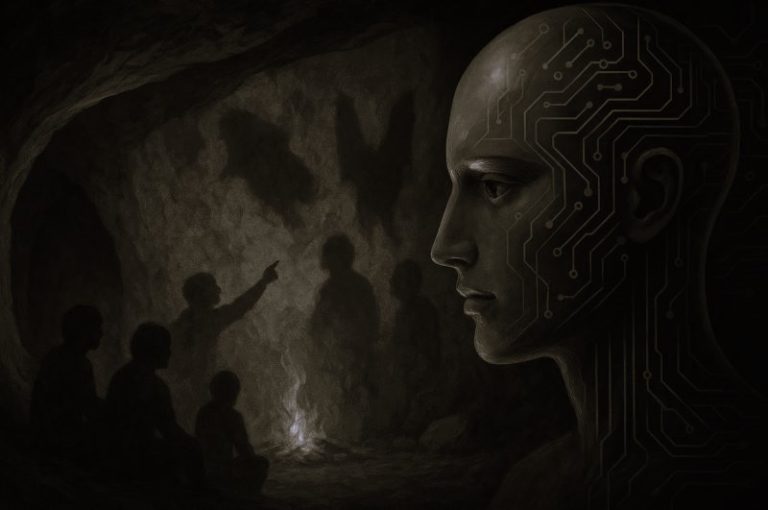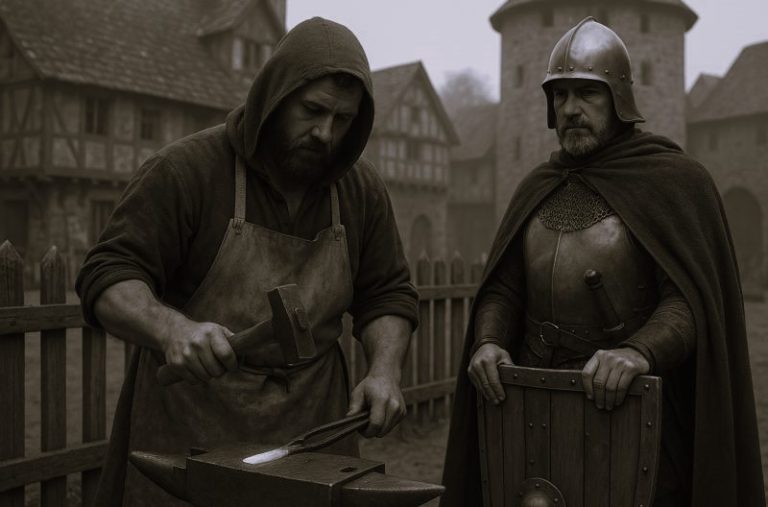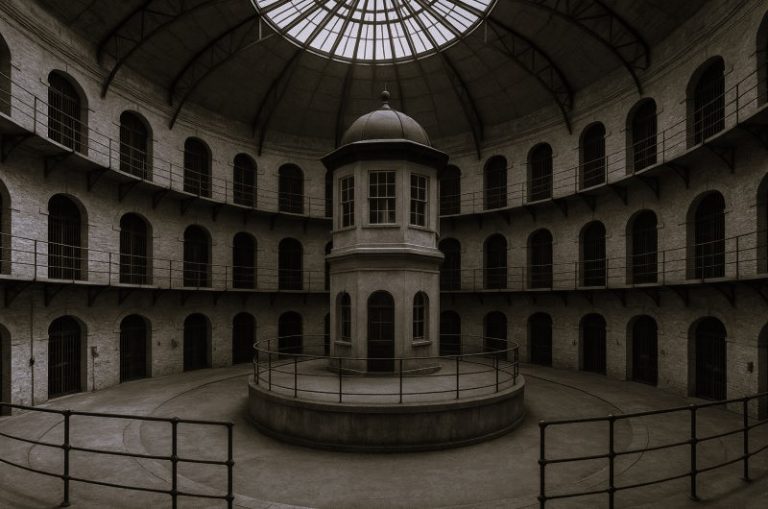Reconstructed aerial view of Constantinople (modern Istanbul, Turkey), the capital of the Byzantine Empire / Wikimedia Commons
Lecture by Dr. Paul H. Freedman / 09.26.2011
Chester D. Tripp Professor of History
Chair, History of Medicine and Science Program
Yale University
Introduction
Byzantine Empire under Justinian / Wikimedia Commons
Today the question we’re going to deal with is the survival of the Roman Empire in the East. Why did the Empire, based in Constantinople, survive, whereas, as we saw last week, the Western Empire based, nominally, in Rome–at times in Milan, at times in Ravenna–collapsed in the fifth century? We’re going to take a long view of survival in the East–that is, from the fifth century to the mid-ninth century.
After the mid-ninth century, the Eastern Roman Empire flourishes and has a period, that we will discuss in a few weeks, of great splendor and prosperity. But this long view is justified by the fact that for 400 years, or so, this Eastern Roman Empire faced tremendous threats of invasion, sieges, difficulties dealing with all sorts of nations and peoples, and, at the same time, internal division, because of religious controversy. Or what the people who won, called heresies.
I remind you that while we call it the Eastern Roman Empire or the Byzantine Empire, they called themselves the Roman Empire–no adjective, no qualification. They were the successor to–and if they were the only successor, tough luck–the empire of Augustus, the empire of Diocletian, the empire of Constantine. In their base, before the seventh century, they were, as you see on the map. The map really shows them, more or less, at their height. Eastern Roman Empire– notice that it goes as far as Spain in the Mediterranean. This was the accomplishment of Justinian, and emperor of the sixth century, whose reign marks a kind of apogee, a height of power of this empire, within in this period of crisis.
So while I’m saying that we are dealing with about four century’s worth of sieges and crises, there is this period in the sixth century, in the reign of Justinian, who represents a kind of brief, but very important, reconquest of the West. And that’s partly what you’re seeing, at least the leftovers of it, in this map, that shows you the Byzantine or Eastern Roman Empire in the year 600, extending–including Spain, North Africa, the coast of what’s now Libya, Egypt, the Mediterranean Middle East–that is modern Israel, Syria, Lebanon–Anatolia–that is to say Asia Minor, modern Turkey–and the Balkans, Greece, and the Aegean Islands.
This empire was held together by Constantinople, which, as you see, and as we’ve already spoken about, is strategically placed to control access between Europe and Asia, across the Bosphorus Straits, and also between the Black Sea, which is the access point to Central Asia and the Mediterranean Sea. This city, modern Istanbul, still has the walls built by Theodosius II, in the early fifth century.
The so-called Theodosian Walls–rather nastily restored recently–are an incredible monument, still, in their ruined state, to the power of Constantinople, as they were built on the landward side. Constantinople–very difficult to attack from the sea, and, because of the walls, very difficult to attack from the land.
Until very recently, that is, I would say, until the 1980s, the Theodosian walls were not reached by the urban agglomeration of Istanbul. That is, they were so big and so far from the main center of the city, that only in recent decades has Istanbul, which is one of the fastest growing and most prosperous cities in the region, has the city leapfrogged over the walls, and the walls are now in kind of the midst of a new part of the city. Nevertheless, extremely impressive accomplishment. And the period we’re dealing with is mostly sieges of Constantinople and heresies. And if you just hold that in your mind, this, somewhat, “one event after another, that I never heard of,” quality, that this will have, I think will be, if not alleviated, at least rendered comprehensible.
Procopius’ Secret History
Procopius from the Justinian Mosaic in the Basilica of San Vitale, Ravenna, 547 CE / Wikimedia Commons
Let me just say a few words about Procopius. It has disturbing, even weirdly pornographic parts. It is a diatribe against the Emperor Justinian. I don’t think I’m giving anything away by saying that Procopius’ theory about Justinian is that he’s a demon, a devil, a representative of hell.
What makes this text interesting, is it’s an intimate portrayal, even if it may not be an accurate one. But we will pay a certain price–we are willing to pay a certain price for intimacy, for immediacy, for the sense of an extremely sinister court. It’s a little bit like reading about Stalin, or some other capricious, extremely powerful, hard-working, but bloodthirsty ruler. I think what you have to ask yourself is, how could a ruler of this particular time and polity, not be bloodthirsty? What seems to be Procopius’ problem? And we’ll elucidate some answers on Wednesday.
Procopius, in part, is interesting, because all of this other works are lavish in their praise of Justinian. This is an historian who knows nothing between panegyric and diatribe. Nothing between lavish servile praise and the harshest imaginable criticism. The two go together. The two are phenomena, again, all of absolutist courts from that of Louis XIV to that of twentieth century dictators. The same kind of enforced praise can create a kind of humiliation and rage that comes out in other forms.
A Secret History had to be secret, because had the authorities read a few words of this, Procopius would have not died in bed, as, indeed, he did. We know this from one manuscript in the Vatican found in the seventeenth century. OK. So that’s my introduction to Procopius.
Circumstances of the Survival of the East
The Paleologoi Map showing Greece and Turkey under Byzantine control / Wikimedia Commons
When we talk about survival of the East, we’re talking about survival under several different kinds of circumstances. So our first concern is, how did the East survive the fifth century, which destroyed the Western Roman Empire? Part of the answer is geography. The East was easier to defend, especially, as I’ve just said, the position of Constantinople, both as an impregnable site and as a commercial city with very, very extensive trade, and as a base to defend the two core territories of the Empire. By core territories, I mean that, really, the essential parts of this empire, which are the Balkans–including Greece under that rubric, for the moment–and Asia Minor. And, of course, Constantinople is ideally placed to protect both of them.
Other advantages of the East over the West–a bit richer, more urbanized, produced more taxable revenues than the West. It’s army didn’t fall apart. It’s civilian structure of administration remained intact.
With the exception of Justinian, very few these emperors are that outstanding in their abilities. But their subordinates were very capable, the government worked well, and the East survived a number of powerful threats from the outside. “From the outside” meaning it had the same problem as the Roman Empire, in an, admittedly, smaller and more defensible space. It had an eastern frontier and it had a northern frontier, both of which were fragile. The eastern frontier with Persia–we already talked about them–and the Northern frontier, along the Danube River, more or less, with all sorts of different peoples, from the Avars, Slavs, Bulgars, all sorts of nations that would attack it.
It also had the disadvantage of internal religious dissent. And we’re going to be talking more about this. These problems, eventually, did affect the East adversely. It would have a period of pretty radical decline, not so different from that of the West. Beginning in the seventh century, this decline can be seen in the abandonment of many cities, or their much smaller population–we’ve already seen that as a feature of the West– in the loss of territory. We’re going to be talking about Islam and the Arab conquests. But they begin in the seventh century, and, very quickly, result in the loss, from the Byzantine point of view, of Egypt and the Mediterranean Near East.
But unlike the West, the Byzantine, or East Roman government, never collapsed in the face of these threats. Although, it is a kind of period of cultural decline. Certainly, a period of military defeats, of sieges, of political problems, and of religious dissent. Nevertheless, the Empire would survive. In general, during this period, what unites these 400 years–we’re talking about, roughly, 450 to 850–is the ability of the empire to resist invasions, its willingness to accept the loss of certain provinces, while protecting others, and its domination of Constantinople over its region. At the opening of our period, cities like Alexandria and Antioch are extremely important. Their importance within the Byzantine Empire declines.
Christological Controversies – Nestorianism and Monophysitism
Nestorianism (left) and Monophysitism (right) / Wikimedia Commons
But in order to understand that some of the internal problems, we’re going to have to talk about heresies. I think I already apologized for having to talk about heresies, and I think I already explained why it’s important. Questions, remarks, denunciations? OK. Representatives of the iconoclast defense fund want to claim equal time? OK.
This is just a selection of heresies, right? I mean, it’s the proverbial tip of the iceberg, the proverbial icing on the cake, the proverbial–what do you call it–crust on the chocolate pudding. But having said that, these two are what are called Christological controversies. They’re about the nature of Christ. The relationship of his human to divine nature. And, grossly, to oversimplify, the Nestorians emphasize Christ’s human nature, and the Monophysites, Christ’s divine nature.
Nestorius of Constantinople / Wikimedia Commons
The beginning of this controversy is with the Nestorians, named after the patriarch, Nestorius, the bishop, Patriarch of Constantinople. Nestorius seemed to teach–and he’s patriarch in the 420s, and the stories would be deposed in 431 as patriarch. His followers seemed to teach that Christ was fully human and that his divine nature was either separate from is human nature, or it was nonexistent or irrelevant. I should remind you that the problem is posed by Christ being God and yet, being crucified and suffering and dying. So this is a problem that, logically, arises out of an understanding of who Christ is and what he does for humanity.
Constantine burning Arian books. Drawing on Vellum, from a compendium of canon law produced in northern Italy c.825 CE, Biblioteca Capitolare, Vercelli, MS CLXV / Wikimedia Commons
Nestorius was deposed by the Third Ecumenical Council of Constantinople, which meets in Ephesus, on the western shore of Asia Minor. Council of Ephesus, Ecumenical Council–the third one in 431. The first two had dealt with Arianism. I remind you that Arianism is a different problem, because it deals not with the nature of Christ, but the relationship of Christ to God the Father. Here, we’re now just concentrating on Christ. The Monophysites, in opposing the Nestorians, naturally emphasized Christ’s divine nature, as the Nestorians had, in their opinion, overemphasized the human nature.
But from the point of view of the group that we can call Orthodox, the people who believe neither in Nestorianism nor Monophysitism, both sides were extremists. The Monophysites over- did Christ’s divine nature. If the Nestorians taught that Christ had two natures, a kind of fully human one and a fully divine one, that were separate, the Monophysites seemed to be teaching, or did teach, that Christ had one nature, and that, essentially, divine. The relationship of the human and divine natures,in Monophysitism was denounced by their opponents as if you threw a bucket of water into the ocean. The bucket of water representing the human part. What’s at stake in this, and why it’s important, is how Christ saves people. If he is too human, then he’s just a human, elevated by God, like some kind of ancient-world hero. And he doesn’t seem, then, to have the power to save people from the devil, hell, original sin, all of these terrible things that God has saved the followers of Christ from. If he’s divine, completely divine, then what’s the point of distinguishing him from God the Father? And then, how did he suffer on the cross? Was his suffering real? Can God, with no human elements, suffer?
It’s important to understand what’s at stake. Sort of, because maybe we are thinking–I hope not, because you’re not in a medieval frame of mind, if you’re thinking this–you may be thinking, though, none the less, “Well, why don’t they just agree to disagree?” Or something like, “Hey, you can believe in one nature, I’ll believe in two.” Or, “You can believe in two separate natures, I’ll believe in two natures coexisting. And God will reward your good intentions.”
That’s really the problem, is that we live in a society in which, at least, so we may think. enlightened people don’t really impose their beliefs, in detail, on others. We’re not really interested in theology that much. But the Bible, I’ve got to admit, does say that it is important to have the right belief. The Bible, particularly, but not exclusively, the Old Testament, is very bad on rewarding good intentions.
Baroque painting of the death of Uzzah by Giulio Quaglio the Younger in a medaillon in Ljubljana Cathedral, 1704 / Wikimedia Commons
The further back you go in the Bible, the less are good intentions rewarded. Lot’s wife was told not to look back. She looked back. She was turned into a pillar of salt. Nobody said, “Oh, OK, you didn’t mean to look back” or you know, “human weakness”. That’s just it. Or the guy, Uzzah, who stumbles as they’re carrying the tabernacle back to Jerusalem, from captivity with the Philistines.
But the guy stumbles, and God strikes him dead. He stumbled. Nobody asks him, “Oh, I’m sorry, I didn’t mean to stumble,” or “a little rabbit ran in front of me.” He stumbles; he dies; that’s it. God wants you to understand what’s going on. Insofar as you don’t make errors. Therefore, the right understanding of Christ’s nature is important. It’s not just a matter of convincing other people that one band is better than another, or one kind of game is better another, or one team is better than another. It is crucial.
Gregory of Nyssa mosaic, Saint Sophia Cathedral, Kiev, Ukraine, 11th century / Wikimedia Commons
Gregory of Nyssa, himself a theologian, writes, about 500 AD or so, that the mood of theological controversy is so great, that if you go into a shop, and you ask about your change, he says, the shopkeeper philosophizes about the begotten and the unbegotten. If you inquire about a loaf of bread, the baker will reply, that the Son is inferior, and the Father is superior. And if you ask if your bath is ready, the attendant says that the sun is made out of nothing. Now, all of this is a satiric remark about the way in which ordinary people are caught up in this religious controversy. It is not, exclusively, a matter of intellectuals or clergy. But it’s a political problem as well, and that’s the reason that it really preoccupies us.
The Council of Chalcedon (451-454), Chalcdon on the other side of Constantinople, denounced the Monophysites. It basically says that Christ has two natures. They are both perfect, they are indivisible, but they are separate. Two natures, one person, one hypostasis. A “hypostasis” is a thing that exists in its own right.
Saint Leo Magnuse (Pope Leo I “The Great”), by Francisco de Herrera el Mozo, 17th century oil on panel / Prado Museum, Madrid
This solution was suggested by Rome, by the pope. The same Pope Leo the Great, who’d negotiated with the Huns. The West had the advantage of not experiencing these kinds of controversies. And so Constantinople, far more powerful than Rome in the 450s–Rome, about to collapse completely–nevertheless, is beholden to Rome for, at least what would be the majority solution, to the problem of Monophysitism.
Of course, actually, it’s not a solution, because not everybody acknowledges the Council of Chalcedon. It provokes a split. The Patriarch of Alexandria would be the leader of those resisting the Council, and Egypt, Syria, and, to some extent, Lebanon and Palestine, would be Monophysite, steadfastly. Indeed, the survivors of the Monophysites–that is the modern-day representatives of this part of Christianity–are the Copts, in Egypt, who form 10% of the population–Christian Monophysites–and the Christians of Ethiopia, who form a little more than 50% of the population of Ethiopia. The so-called Coptic Christians are the descendants of the Monophysites.
The Nestorians also have some scattered followers in the modern world. They were very strong in Central Asia. And if you’ve studied things like the voyages of Marco Polo and other Western travelers in the thirteenth century, the people who interpret for them, who help them, who acquaint them with central Asia and the Chinese Mongol Empire, are Nestorians. But we’re going to leave them out, because they’re not a political problem for the Byzantine Empire. They’re, pretty much, exiled.
The Copts are an internal problem. And the Monophysites, or Copts, do not like the Orthodox, the Byzantine Emperors. The Byzantine Emperors try to compromise with them. And I’ll mention a couple of these compromises. The Emperor Zeno, from 474 to 491, issued a document called the Henotikon. We’re back to emperors. As with–we saw as far back as Constantine, emperors trying to intervene to solve religious controversies, right?
The Henotikon says, one of the Trinity was incarnate, and we’re not going to discuss it anymore. So first, it says this rather noncommittal statement: “One of the Trinity was incarnate.” And then it also outlaws any further discussion. Nobody liked this.
Zeno was succeeded by Anastasius, who was a Monophysite. And then, as we’ll see, the great emperor of the sixth century, Justinian, who we’re going to be looking at much more closely, was a fierce anti-Monophysite or Chalcedonian, Orthodox. But his wife was, sort of, semi-Monophysite. This may have been politic. Since they were both effective rulers, the people who were Monophysite could orient themselves to Theodora, the Empress, and the Orthodox, to Justinian. Ultimately, this problem would be quote, “solved,” because the Arab Muslim invasion of the seventh century would take over the Monophysite territories.
The Rise of Islam, the Persian Threat, and Barbarian Invasions
Again, I hope I’m not giving away a secret, by saying that the most striking, sweeping, and dramatic event of Mediterranean world or of the Eurasian land mass of the period that we’re dealing with, arguably, is the rise of Islam. Mohammed’s Hegira is in 632-633 CE.
By 660, Egypt, Syria, Palestine, Lebanon have fallen to Muslim rule. And they are extending their power as far west as North Africa and as far east as Afghanistan. How this happens, why this happens, is the subject for discussion a little later. But again, if you refer to the map in 600, this is before the Islamic takeover. And again, if you look further east, the Eastern Roman Empire consists of all these parts, many of which are about to be taken away from it. And the parts that were taken away from it were pretty much the Monophysite parts.
So the fifth century is the story of the survival of the Eastern Roman Empire, despite these religious controversies. The early sixth century, which we’ll talk about in more detail, is the story of the expansion of the Empire to make a stab at reuniting, by conquering the West, what had been the single Roman Empire.
Justinian’s empire was overextended, at least in retrospect. This is a reconquest that, at least, consultants from a later generation would have said was a mistake, an overexpansion. Initially, the main enemy of the Byzantine Empire, after Justinian–so in the late sixth century, early seven century–would be Persia. But also, at the same time, the Byzantine Empire would start experiencing Danubian frontier incursions, attacks from the Balkans. And here again, as I said, it’s all invaders and heresies. Invasions from Slavs and Avars in the Balkans, and the Persians in the East.
In 591, a revolution toppled the Persian ruler, who, peculiarly enough, fled to Byzantium for refuge, where the Emperor Maurice helped him gain his throne back. In 591, there was a peace between Persia and Byzantium, and Byzantium seemed to have come out of this terrible period of warfare of the late sixth century.
This allowed Maurice to turn his attention to his other front, his Western- Northern front, where the Avars were a tremendous threat to him. The Avars, a central Asiatic people, who come in through Central Asia into the Balkans. And they carry with them, to some extent, the Slavs. The conventional portrayal used to be that the Avars sort of lead the Slavs; the latter are kind of passive. It’s a little more complicated than that. The Avars had taken the great cities of the Balkans. And in 492, Maurice turns to deal with them, to push them back against the Danube. His army rebels against him, and he’s overthrown and killed.
The beginning of the seventh century is the period of the maximum danger of Byzantium. It lasts, with intermittent flashes, from 602, the overthrow of Maurice, to 717, the Arab Siege of Constantinople. Immediately, this new emperor, Phocas, is attacked by Persia. The Persian King claiming to revenge the murder of his benefactor, but, in fact, simply reopening the war with Constantinople.
In 608-609, the Persians and the Avars are allied, and the Persians are really on the march. By 617, they have taken Egypt, they have taken Syria, they have taken in Jerusalem, and the relic of the Holy Cross has been taken back to the Persian capital. The emperor, at this time, Heraclius, whom Wickham is not very impressed by, admittedly.
Heraclius leads a resistance, as does the patriarch, to a siege that is on both sides of the city of Constantinople. On the one side, the land side, the Theodosian Walls, are the Avars and the Slavs on the Bosporus. Across the city, on the Asian side of the Bosporus, are the Persians. And what Heraclius does, is to confide the city in the care of the patriarch, and go off and attack the Persians from the rear.
The patriarch defends the city, not only by organizing the army, but by putting wonder-working icons on the walls, to face the enemy. An icon is a painting of a sacred figure. So then, it is not a statue, but a painting. And it portrays a saint or Mary or Christ. And in what has come to be called the Orthodox tradition, these remain today, a figure of the church, a very distinct kind of aspect of the piety of the East.
The Church–patriarch ordered that the Church melt down all of the treasures that had been given to it, to decorate it, in order to pay for troops. So the combination of the icons, the money, the spirit of the populous, and military means were able to withstand this prolonged siege–at times a double siege–of the Persians on one side, the Avars and the Slavs on the other side.
After many years of fighting in the East, Heraclius succeeded in overthrowing the Persians. At the battle of Nineveh in 627–this is a seventeen-year war or so. I’m sorry, Nineveh–E-H.
Heraclius defeats the Persians, and the Persian Empire is virtually crippled. 627–Byzantium would have seemed to have been triumphant. The first Arab attacks, however, were in 634, twelve years after Mohammed’s Hegira. By 636, Syria had been taken; by 638 Jerusalem had been taken; and the True Cross, again–in this case, we lose sight of it.
Persia, itself, would collapse in 640 and pass under Arab rule. Egypt would fall in 645. What’s left of the Empire, then, is the Balkans and Anatolia–some Armenian, some Slavic elements. So weak is this empire, so beset by enemies, does it seem to be, that a successor of Heraclius, the emperor Constans II, moved the capital to Sicily, to the West. Constans II ruled from Syracuse–Syracuse, Sicily, obviously–the original Syracuse. He would be the last emperor to visit Rome. And he was, actually, the first since 476.
So in 662, when he moved the capital to Sicily, we have the spectacle of a kind of ghost emperor visiting a ghost city. Visit of Constans II to Rome, and the severe crisis of the Eastern Empire beset, as it was now, particularly, but not exclusively, by the Arabs. And indeed, in 674, the Arab fleet appeared off Constantinople. In 678, we hear, for the first time, of the weapon of the Greeks against the Arab fleets–a weapon called “Greek fire”.
Greek fire is some kind of flaming projectile. In other words, something that you can shoot with a catapult, or some other propulsion device, that will burst into flame. Obviously, you can’t launch it if it’s already burning. You have to have something that–this is the essence of basic bomb throwing–you have to have something that will explode on impact. The Greek fire was, particularly, effective on wooden ships and on rigging and sails. It would set the ships on fire. And it’s a weapon that seems to have been unique, at least for awhile, to the Byzantines.
But, parenthetically, how was it that the Arabs have a navy, in the first place? These people, who decades before, had never seen a river that flowed all year long, who had no experience with the sea, for whom the desert was the sea. It is an example of this kind of very rapid adaptability that we’ll emphasize, when we come to talk about the Islamic invasion. The East did survive even this attack.
Iconoclasm
Argument about icons before the emperor, from the Skylitzes Chronicle (Synopsis of the Histories), 12th century / Wikimedia Commons
The seventh century is a crucial turning point. By this time, the Eastern Roman Empire we’re talking about as the East is pretty much a Greek Empire. Justinian would be the last emperor to speak Latin. And the truncation of the empire, with the loss of Egypt and the Near East, means that it is pretty much a Greek empire and, also, pretty much an Orthodox empire. Orthodoxy is the Christian faith that stands between Nestorianism and Monophysitism.
For the time, the Orthodox world, in the East, and the Catholic world, in the West, are the same. Their official break won’t come until 1054. And as you know, to this day, the Orthodox churches of Russia, Greece, and so forth, look very different. And they also have certain doctrinal differences with the West. And that’s not our subject, for the time being. We do have, however, before the close of business, one more heresy. A heresy that starts to divide the Byzantine Empire in the late seventh century, and that is iconoclasm.
Iconoclasm, which Wickham talks about in some detail, and which he tells us to take seriously. What he means by that, is that iconoclasm seems to be something that must not be about what it seems to be. It’s got to be about something else. Iconoclasm is the belief that images, like icons, in particular, are dangerous. And that they lead to inappropriate worship of the image, rather than what the image symbolizes. So the iconoclasts believe in banning images of persons. A cross is fine, but not a picture of a saint. Even, in some circles, pictures of Christ would be suspect. The danger of this reverence paid to icons is that the icon, then, becomes a sacred thing in itself, and you’ve fallen into idolatry. You’re worshipping multiple representatives of the divine.
Now it certainly seems logical that this must have something to do with Islam. Because Islam, in its most monotheist manifestations, frowns on and bans the representation of purportedly divine figures. And it, indeed, doesn’t like figural representation at all, in decoration of sacred spaces. Lest this be interpreted as exalting figures, even the Prophet–especially the Prophet himself. There are no pictures of Muhammad for home consumption, for mosque display.
And so it seems logical that this is a response to criticism from Islam, that Christianity is really not monotheist, that it’s a form of idolatry, because it has so many sacred figures. And that the success of Islam and the success of the Arabs against Byzantium, might be caused by the abandonment of monotheism, the abandonment of the worship of one god and the proliferation of multiple gods. The problem is that there’s no real evidence of this. And you don’t have to have Islam to force this kind of thing.
If you look around the churches of much of Northern Europe, you will see statues that have been decapitated by Protestants, in the sixteenth and seventeenth century, or stained glass that was destroyed by Protestants. Protestantism is iconoclastic in many of its forms, in that it believed that the Catholic Church was superstitious, paid reverence to all of these saints and human figures, and forgot, in the process, to concentrate on the single God.
Iconoclasm is a crisis of the empire. It is also, like these other heresies, a recurrence of this problem of how to represent the connection between God and human beings. What connects the divine with the humans? Are there intermediaries? Is Christ an intermediary, or is he God? And if he’s God, how is there intermediation? Why does God care about us? How does God care about us? How many ways are there to approach him?
It took until 843 to settle this controversy. It had many periods of settlement and then a recrudescence. It’s a controversy that lasts, then, something on the order of 150, 160 years. At times, it divides the Empire completely, at times not. It tends to be supported by the emperor. If the emperor isn’t iconoclastic, it tends to wane. It’s supported by the emperors, partly, as a way of trying to unify and mobilize the Empire around the figure of the emperor, instead of dissipating the energies around the various saintly figures.
Conclusion
So where are we, with this empire, that seems to consist of only sieges and barbarian peoples and heresies? In the ninth century, it would seem that the cities, with the exception of Constantinople itself, had declined to become little more than fortresses. We seem to be at the end of classical antiquity, in some fundamental way, of that society built around Mediterranean cities. Society even here, as in the West, is rural.
There’s not a whole lot of trade. There still are libraries, with books in them, but they don’t seem to be read very much. We have very few texts from this era. It’s a militarized society. It’s an intensely religious one. There’s very little secular literature. This is really at the end of Greco-Roman Pagan knowledge. As it happens, however, this period would usher in an era of surprising, at least in retrospect, prosperity for the Byzantine Empire.


